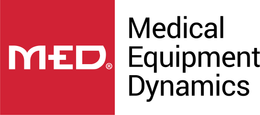For medical device manufacturers, securing FDA clearance is a milestone that marks the transition from innovation to real-world impact. Yet, over the past few years, that journey has become increasingly complex. Clearance times are stretching longer than ever, review pathways are evolving, and the rise of AI-driven devices is adding new layers of scrutiny to an already demanding process.
Understanding the forces shaping FDA review timelines isn’t just an exercise in patience—it’s a competitive advantage. The more manufacturers know about these trends, the better they can plan, allocate resources, and bring safe, effective technologies to market faster.
The Growing Challenge of Clearance Delays
In 2025, the average FDA review time for a traditional 510(k) submission now ranges between 140 and 175 days—well above the agency’s goal of 90 days. Only a small fraction of applications are being cleared within that benchmark. For more novel products, particularly those incorporating software or artificial intelligence, the process can take even longer, with De Novo clearances averaging close to 300 days.
This slowdown isn’t the result of a single factor. Rather, it reflects the convergence of new technology, evolving regulatory expectations, and internal resource challenges at the FDA’s Center for Devices and Radiological Health (CDRH). Recent staffing reductions have stretched reviewer capacity, creating bottlenecks even as submission volumes continue to rise.
How Emerging Technologies Complicate Review
AI-enabled medical devices are redefining how the FDA approaches evaluation. More than 1,250 AI-enabled devices have now received authorization, but each presents unique challenges. Unlike traditional hardware, these devices often rely on algorithms that evolve over time, requiring regulators to assess not just current performance, but also how future updates may affect safety and effectiveness.
This paradigm shift has led to the creation of new regulatory frameworks, such as the FDA’s proposed AI/ML Action Plan, designed to manage adaptive learning algorithms responsibly. While this framework promises long-term efficiency, in the short term it has extended the depth and duration of reviews.
The Quality of Submissions Still Matters Most
Even amid these evolving conditions, one factor continues to influence clearance times more than any other: submission quality. Many delays occur because applications lack complete data, contain inconsistent documentation, or fail to align with the appropriate regulatory pathway. When reviewers request additional information—known as “AI letters”—the process can stretch by weeks or even months.
Strong early-stage preparation remains the best antidote. Clear documentation, validated testing, robust clinical evidence, and transparent labeling all help minimize back-and-forth with the FDA. For complex products, engaging in a Pre-Submission (Q-Sub) meeting can also be invaluable, helping developers clarify requirements and avoid missteps later in the process.
Variation Across Clinical Specialties
Interestingly, review times vary significantly depending on device category. Radiology products still tend to move through the process faster, often cleared in just over 100 days. By contrast, devices in specialties like ophthalmology, obstetrics and gynecology, and anesthesiology can take closer to 200 days or more. These differences often reflect the availability of predicate devices, the complexity of clinical data, and the degree of innovation in each field.
Balancing Innovation and Oversight
The FDA’s evolving review process represents a delicate balance: ensuring safety without stifling innovation. Regulators are tasked with adapting to rapid technological advances—especially in digital health—while maintaining rigorous oversight. For manufacturers, this means adapting to a new normal in which comprehensive evidence generation, cybersecurity validation, and post-market surveillance are no longer optional add-ons, but integral parts of the regulatory lifecycle.
Strategies for Developers and Manufacturers
While the broader regulatory environment may be beyond an individual company’s control, there are proven ways to manage timelines more effectively:
- Prioritize submission readiness. Invest time early in gathering complete, well-organized data and ensuring all testing meets FDA standards.
- Engage early with the agency. Pre-Submission meetings can clarify expectations and streamline review once formal applications are filed.
- Select the right pathway. For devices with novel mechanisms or no clear predicate, the De Novo pathway may be appropriate—but should be planned for longer timelines.
- Plan for lifecycle management. Include post-market monitoring, cybersecurity updates, and software version control in initial documentation to reduce future review cycles.
- Stay informed. The FDA regularly updates guidance documents on AI/ML, clinical data requirements, and real-world evidence. Keeping pace can prevent costly surprises.
Looking Ahead: The Future of Device Regulation
As the FDA prepares for the next round of Medical Device User Fee Amendments (MDUFA), changes to review performance goals and funding structures are expected. The integration of real-world evidence (RWE) into submissions, international harmonization efforts, and digital transformation within the FDA could gradually shorten timelines—but that shift will take time.
In the meantime, manufacturers who treat regulatory navigation as a core competency rather than a compliance hurdle will have the upper hand. The companies that prepare strategically, engage transparently, and build quality into every stage of development are those most likely to succeed in this new regulatory era.
Additional Resources
- FDA: Medical Device Safety and the 510(k) Clearance Process
- FDA: AI/ML-Enabled Medical Devices Database
- National Academies: Medical Devices and the Public’s Health
- MIT Thesis: Factors Influencing FDA Clearance Time for Medical Devices
The FDA clearance process is evolving rapidly, and while the road may be longer, it’s also becoming more transparent and predictable. For the innovators shaping the future of healthcare, understanding this evolution is the first step toward navigating it successfully.

